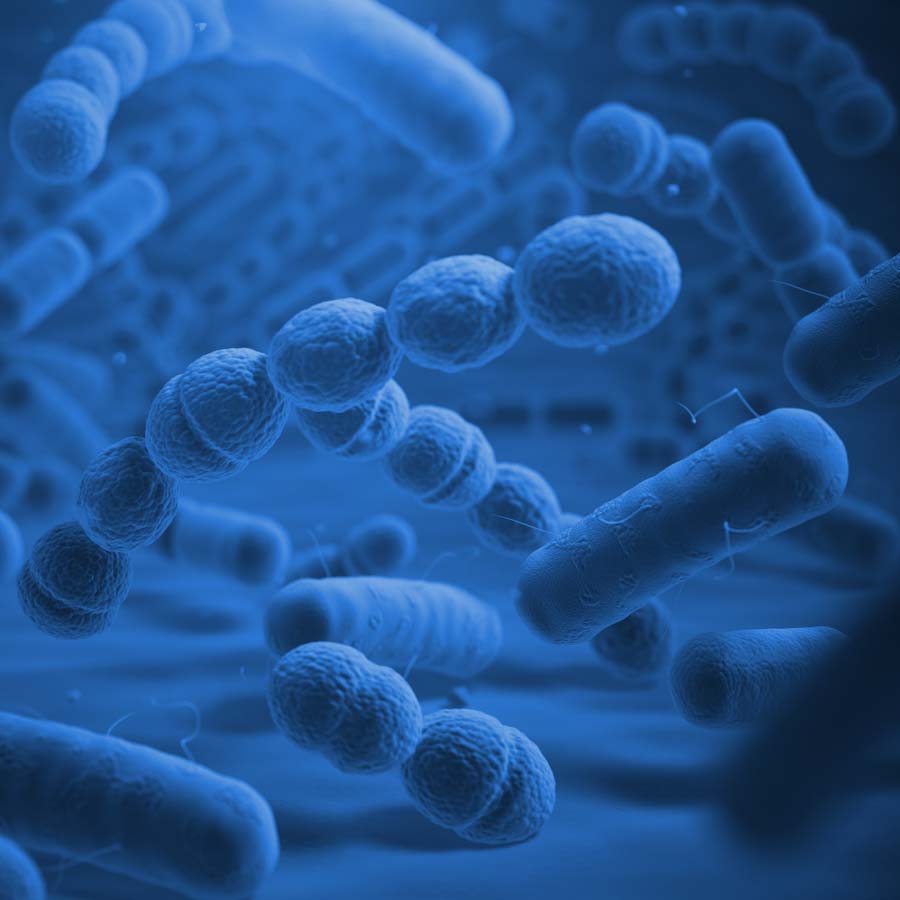The MBEC Assay® (ASTM E2799) approach was designed to address the well-established fact that microbes growing in a biofilm may be up to 100 or even 1000 times less sensitive to antimicrobial agents. .
Biofilms occur in situations where microbes are allowed to survive on a surface for a period of time. This may occur in the context of implanted medical devices (i.e., artificial joints), chronic wounds and large burns. Biofilms may also occur within pipelines, on high touch surfaces, and in hard-to-reach areas. The resulting reduced sensitivity to antimicrobial agents can result in a failure to eradicate the biofilm, despite the agent being effective against the organism when tested by traditional methods. The MBEC Assay® (ASTM E2799) approach was designed to address this deficiency by providing a relatively high throughput method to determine the efficacy of antimicrobial agents against pre-formed biofilms.
The MBEC Assay® method consists of first growing 96 nearly identical biofilms on a 96-peg lid. The biofilms are then exposed to increasing concentrations of your antimicrobial agent. After the prescribed challenge time, the remaining cells are recovered and quantified. Similar to the MIC assay, the MBEC Assay® (ASTM E2799) system generates cut-off values to determine the concentration of antimicrobial required to be effective. This information is useful for determining the feasibility and costs associated with a particular antimicrobial agent for applications involving removing existing biofilms.


To date, MBEC Assay® testing has been featured in 100s of peer-reviewed publications. The MBEC Assay® method is now approved by ASTM (E2799-17).
MBEC Assay® testing options include the following:
- Qualitative data package (MIC, MBC, MBEC)
- Quantitative data package (log reduction)
- Quorum Sensing Inhibitor testing
- Synergy testing
- MBEC Assay® lids can be coated with
- poly-L-lysine
- hydroxyapatite
- cellulose
- titanium dioxide
- custom coatings to fit your needs
Related Articles: MBEC Assay® Method
- Ruggedness and reproducibility of the MBEC biofilm disinfectant efficacy test
- Microtiter susceptibility testing of microbes growing on peg lids: a miniaturized biofilm model for high-throughput screening
- Interspecies variation in Candida biofilm formation studied using the Calgary biofilm device
- Investigating the suitability of the Calgary Biofilm Device for assessing the antimicrobial efficacy of new agents
- The Calgary Biofilm Device: new technology for rapid determination of antibiotic susceptibilities of bacterial biofilms
- The MBEC Assay™ System: multiple equivalent biofilms for antibiotic and biocide susceptibility testing
- Characterization of biofilm growth and biocide susceptibility testing of Mycobacterium phlei using the MBEC Assay® system.
- Minimum inhibitory concentration (MIC) versus minimum biofilm eliminating concentration (MBEC) in evaluation of antibiotic sensitivity of gram-negative bacilli causing peritonitis
- Differences in biofilm and planktonic cell mediated reduction of metalloid oxyanions
- Biofilm susceptibility to metal toxicity
- Metal resistance in Candida biofilms
- Comparative assessment of the antimicrobial susceptibility of Staphylococcus aureus isolates from bovine mastitis in biofilm versus planktonic culture
- A novel technique for evaluating the activity of biocides against biofilm bacteria
- High throughput metal susceptibility testing of microbial biofilms
- Persister cells, the biofilm matrix and tolerance to metal cations in biofilm and planktonic Pseudomonas aeruginosa.
- Quorum-sensing mutations affect attachment and stability of Burkholderia cenocepacia biofilms
- The GacS sensor kinase controls phenotypic reversion of small colony variants isolated from biofilms of Pseudomonas aeruginosa PA14
- Effects of the twin-arginine translocase on the structure and antimicrobial susceptibility of Escherichia coli biofilms
Utilize our Experienced Team:
- 40+ years of collective experience.
- Knowledge to test a wide range of products.
- Experience testing under aerobic, anaerobic and microaerophilic conditions.
- Experience testing bacterial and fungal strains.
- Experience testing medical devices, textiles, as well as agricultural and oilfield products.
